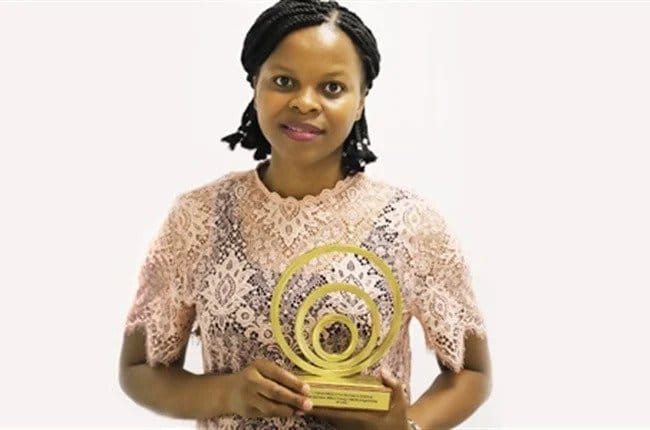Alex
The stars are the limit for Theresa Mazarire, who was named one of the 20 laureates of the International Awards L’Oréal-Unesco For Women in Science, in sub-Saharan Africa, for her idea that combines environmental science and public health to map and control malaria mosquitoes.
The 20 were selected from 440 applications in 17 African countries and the awards are given to women involved in novel scientific research in sub-Saharan Africa, which is going to help communities.
Mazarire (31), who grew up in Masvingo village in Zimbabwe, joined Wits University in 2016 to pursue her master’s of science in geographic information system mapping and remote sensing.
She is now doing the third year of her doctoral studies in the division of virology, School of Pathology at Wits and based at the Vector Control Reference Laboratory, National Institute for Communicable Diseases (NICD).
It was her doctoral research that focuses on malaria vector (an organism that carries and transmits infectious disease as mosquitoes do for malaria) control that won her recognition for the awards.
“I used geotechnology to study the interaction between the environment and mosquitoes. My research seeks to analyse the geographical phenomena that contribute to mosquitoes’ prevalence and spatiotemporal distribution.” She said:
This is done by using satellite remote sensing data to map climate, land cover and ecological variables that promote the emergence or survival of malaria vectors in an environment.
She said the success of vector control strategies depends on timely and accurate knowledge of the distribution of vectors spatially and temporally.

Speaking to City Press on Wednesday, Mazarire said that, after completing her honours in environmental sciences, she had wanted to pursue a path less travelled, and Wits University had offered her the platform to advance her skills.
“After I completed my master’s of science, I decided to challenge myself more and by pursuing a doctorate in the science discipline of health issues, so, seeing the impact of malaria in the world and the massive deaths in the African region and how it is still claiming lives, I was motivated to apply technological tools I had been obtained from my master’s of science in assisting strategies that are engaged in the fight against malaria,” she said.
She shared that her PhD research forms part of a bigger project in which male mosquitoes are mass-reared in the laboratory, sterilised and released into the wild so that when they mate with native wild females, the offspring from such mating are not viable and cannot transform malaria.
READ: 228 million malaria cases reported last year
The road has not always been easy for Mazarire, who shared that she had a tough upbringing, as she was raised by her grandmother after her parents had passed away when she was seven years old.
“I grew up in a village where a girl child was not given equal opportunities to explore her capabilities academically and, considering that I was raised by an old grandmother, access to resources was always a challenge. However, I am grateful for the support I got from my siblings and grandmother. When I pursued my tertiary education in South Africa, studying for a master’s of science as an international student, it was not always easy, especially when it came to getting funding.” She said:
I was fortunate enough to receive a helping hand from my siblings.
She is jointly supervised by Dr Givemore Munhenga, a principal medical scientist in the Vector Control Reference Laboratory, and Prof Solomon Newete, a senior researcher at the Agricultural Research Council – Natural Resources and Engineering, at Wits.
Mazarire said malaria transmission in South Africa was seasonal, with cases starting to rise in October, peaking in January and February, and waning towards May.
“In South Africa, malaria is mainly transmitted along the border areas and is endemic in some parts of Limpopo, Mpumalanga and KwaZulu-Natal.”







